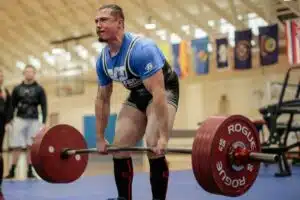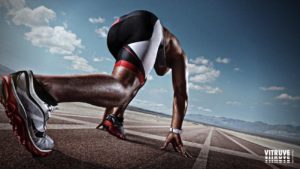One of the most covered topics in the sports realm is how to recover faster and better. The ability to recover determines everything that surrounds training and getting better, this is the one topic, where more is better, and faster is better. The “more” and the faster you can recover from any stressor, the sooner you can expose your body to the same or different stressor, and as we know, more, is better if the quality is high.
So, we can agree that recovery is one of the most important tools in our industry, but how much do we really know about this? Do we know when and how to use each method? In this article, I would try to dive into the most known recovery methods, their pros and cons, and how to get the best out of them without getting in the way of progress and performance.
Icing
Icing is probably one of the most commonly use method for recovery in athletes, in many cases, athletes obtain great results from it, however, from my experience athletes, coaches and sports medicine professionals keep abusing and using this method wrongly.
Let’s get a little more in-depth about what does icing does for you, and for that we need to understand what the process of healing after injuries or “soreness” is. When looking at the healing process that happens after any stressor, we find three different processes.
- Inflammation: the cellular and vascular response to injury. Inflammation begins shutting blood flow off to damaged tissue. The surrounding vessels dilate in order to allow larger blood volume to flow into the damaged area.
- Repair: fibroplastia (formation of collagen) and angiogenesis (formation of new blood vessels) happens during this process.
- Remodeling: during this phase, the new collagen fibers are reshaped and remodeled. These new collagen fibers have greater tensile strength than the prior ones due to the formation of intra and extra molecular crosslinks.
After understanding healing, we clearly can see that inflammation is a key process for healing, repairing and rebuilding stronger and more resilient tissue. Healing cannot occur without inflammation; however, inflammation can happen without healing. If we use ice to prevent, reduce, or delay inflammation we will be interfering with the process of healing. Is also important to correct the popular thought that inflammation and swelling are the same, they are not. Swelling is excess fluid and waisted in the healed or healing area that hasn’t been properly drained by the lymphatic and venous system.
Our focus must be to reduce swelling, not to prevent or delay inflammation.
Now, let’s take a closer look at what the research on the icing is telling us:
- Icing has failed to improve long term recovery, pain reduction is observed in some cases, however, no benefit to the healing process has been observed; not only that but when icing a “sore” musculature, this has been shown to impair the healing process, delaying the process, which turns out into longer recovery times, meaning that if a regular recovery time for an extraneous workout was 48 hours, due to the application of ice, it could turn into 72 hours or more.
- Icing has been reported to decrease speed, power outputs and efficiency in agility-based activities if they are performed shortly after its application. This negative impact is caused by a decrease in nerve conduction velocity, receptor firing rate, muscle spindle activity, and myotatic stretch reflex… icing desensitizes and numbs the area, causing what previously mentioned.
Ice effects on performance.
- Iced water immersion substantially reduced gains in muscle mass and strength due to the suppressed activity of satellite cells and kinases in mTOR pathways. Lastly, iced water immersion has not been effectively proven to decrease DOMS (delayed onset muscle soreness), however, many athletes keep getting good results to decrease DOMS momentarily, but as we just saw, the cost of momentary pain relief comes at a high cost.
- It’s important to consider that, as the use of any pain reducer mechanisms, if abused, this will not be as effective and will lose the desired benefit once is really needed.
I think I have provided enough evidence and experience to come to the conclusion that icing should not be a recovery tool frequently use with athletes. I understand that is commonly used in many institutions at every level, but the cost of using this tool is not worth all the negative effects that it can have on recovery. One exception I would like to point out is that in the case of an important competition, where the athlete must be able to perform without pain, icing might be an option if the athlete and coaching staff is willing to assume the risk of impaired performance and possibly increasing in injury risk. Don’t worry, I am not here to tear everything down, I will give you solutions at the end of this article.
Antiinflamatory Drugs
This is a highly common method use in athletes that experience soreness. The effects of anti-inflammatory drugs end up being similar to the ones obtained by the application of ice, however, they are less restricted to the desired area. It is important to know that most studies have been done in animals and there is very few studies in humans.
A lot of studies show benefits in the early healing process, where subjects are able to exert more force due to analgesic effects, however, in the long term, 20+ days, these effects were reverted, and they showed worst values than those individuals that didn’t use anti-inflammatory drugs. In this manner, anti-inflammatory drugs may be a better option than Icing in the short-term performance of the athlete.
Some studies have observed inhibition of the enzyme COX-2, this has been related with:
- Delayed degradation of the injured muscle; where the healing response takes longer due to interference with the inflammatory process that causes an improper regeneration and decomposition process. The muscle fibers result in lesser tensile properties due to that interference and diminished inflammation.
- Pain goes away in the short term, however, it usually comes back after the effect of the drug, and it stays for longer than in those individuals that have not used it.
It is important to note that some research has suggested that the use of paracetamol-based drugs results in a better analgesic response and fewer side effects.
Once again, looks like anti-inflammatory drugs are also not a really good option for athletes trying to obtain a physiological response out of their training.
Stretching
Probably the king of the Recovery Party, and probably one of the most used methods of recovery since the beginning of sports. I want to start saying that I will just cover the recovery aspect of stretching. Most studies have been done prior to the performance of the exercise, and not after.
One studied looked at the effects after performing an exercise that induced muscle damage; using stretching after the workout reduced edema produced by the damaged muscle, which is probably not the best idea in a healing process since it has an important role in the inflammation process. Also, the study showed that no preventative effects against DOMS where found.
Static stretching keeps being compared to other methodologies for recovery and keeps showing worst results than any other method and even the same as the individuals that did not do anything.
So here is another method, that objectively does not have any benefits regarding recovery; some athletes report to feel improvements from it, and since there is not a high risk from using stretching, I will encourage those athletes to use them moderately as far as they feel better; a little placebo is never bad for the athlete.
Electromyostimulation
When it comes to this methodology, the number one concern is its cost. We need to understand that the benefits of some methodologies are not worth the cost. We are surrounded by many new and innovative recovery tools that claim to be magic and cost a fortune.
Electromyostimulation devices claim to improve recovery by increasing blood flow into the damaged area by small and controlled contractions. Here is the trick, increased blood flow into a damaged structure is really easy to do… walk, lift at low intensity, go upstairs, just move; two studies compared the use of the just mentioned activities with the use of electrostimulation, and both showed the same result, only with one difference, one cost hundreds of dollars, and the other method was free.
Encourage your athletes to move and perform low-intensity activities instead of sitting them down on a bed and waste a lot of money that could be spent somewhere else.
Vibration devices
Vibration devices are a really new methodology in the recovery world, so no much research has been done. Many considerations have to be done when measuring the recovery benefits from vibration devices, especially the intensity of the vibration, some studies have shown that insufficient vibration intensity does not result in greater recovery benefits than active recovery methods.
The difference in muscle stiffness Pre, Post-exercise, and after the use of recovery methods, show no benefits from the use of a Vibration Device (black)
If enough vibration intensity is high enough, it has been proven to prevent sarcoma disruption which occurs due to the strain of eccentric exercises and thus helps in preventing DOMS (soreness).
Taking a look at literature as a whole, vibration therapy, local and whole-body have many benefits compared to control groups or the groups that didn’t perform any active recovery methods. Vibration helps reducing DOMS after intense eccentric exercise, reducing isometric and isokinetic strength and reducing creatine kinase levels.
Vibration therapy has also been reported to improve neuromuscular function due to muscle activation, which means that vibration could also be useful for pre-exercise preparation. It has also shown to increase ROM and decrease stiffness, which becomes a great tool to get normal ROM levels back after extraneous exercise.
It looks like vibration is a great tool to add to our recovery toolbox and combine it with appropriate active recovery methods that we will see at the end of the article. It also looks like there is no potential risk to the use of vibration therapy, wither whole or local methods, and they could be useful for pre, and post-exercise interventions to improve performance and recovery.
Foam Rolling
Before we dive into the research, from my point of view foam rolling is one of the best strategies for recovery, not only for its benefits regarding ROM and DOMS reduction but also for the affordability and portability of the tool.
Even though in this article we are not looking at pre-exercise methodologies, it is important to point out that the research suggests that foam rolling could provide the benefits of improving ROM levels without the side effects on muscle. Contraction abilities that stretching has. It has also been proven to improve sprint and vertical jump performance, however, this results were minimal and only given by one study, which means that more research is needed to draw such conclusion; one tip, try it yourself, some athletes I have worked with have found benefits from it, and others haven’t, this is a pretty easy method to check.
Using foam rolling after exercise has been found to improve recovery rates, decreasing DOMS, and improving lymphatic circulation. The mechanisms are still unknown; however, we can guess that compression has a big role in it.
Foam rolling should be used according to the preference of the athlete, from my experience many athletes experience great results from the constant use of compression methods, such as foam rolling; compression boots seem to have similar benefits to foam rolling.
Effects of Foam Rolling in muscular pain. After exercise.
Conclusion
The key is not in what you do after a workout, but what you do in the workout
Now that we have looked at the most used methodologies for recovery, we can understand that the goal of a good recovery period is the one that is able to get the athlete back into his best state to perform or to improve performance. The ability to recover will determine the amount of work an athlete can do with high quality. Athletes and coaches keep looking for magical methods to recovery after highly taxing workouts, but we are missing the best method, programming the work for the athlete so he or she can recover as quickly as possible, the key is not in what you do after a workout, but what you do in the workout; appropriate management of volume will allow us to work more often; we also need to understand that in some periods, such as offseason, we will be able to increase volume and allow for longer recovery periods since the athlete is not competing.
Proper sleep and nutrition will play the biggest role into an athlete’s recovery, and we don’t need to make them sleep for a certain amount of hours, as we won’t make them eat all the same, every athlete will have optimal sleeping periods, some will feel amazing with six hours of sleep and tired with eight, and vice versa.
Our biggest role when it comes to recovery is to teach athletes how to find their “sweet spot”, find their appropriate times for sleep, if they need or don’t need napping, if foam rolling helps them reduce pain, etc.…
References
- Almekinders, L. C. (1999). Anti-inflammatory treatment of muscular injuries in sport. Sports Medicine, 28(6), 383-388. https://doi.org/10.2165/00007256-199928060-00001
- Baldwin Lanier, A. (2003). Use of nonsteroidal anti-inflammatory drugs following exercise-induced muscle injury. Sports Medicine, 33(3), 177-186. https://doi.org/10.2165/00007256-200333030-00002
- Baloy, K. (2016). Effects of vibration training on muscle recovery and exercise induced soreness: A systematic review. Movement, Health & Exercise, 5(2). https://doi.org/10.15282/mohe.v5i2.93
- Barnett, A. (2006). Using recovery modalities between training sessions in elite athletes. Sports Medicine, 36(9), 781-796. https://doi.org/10.2165/00007256-200636090-00005
- Bleakley, C. M., Costello, J. T., & Glasgow, P. D. (2012). Should athletes return to sport after applying ice? Sports Medicine, 42(1), 69-87. https://doi.org/10.2165/11595970-000000000-00000
- MacDonald, G. Z., Button, D. C., Drinkwater, E. J., & Behm, D. G. (2014). Foam rolling as a recovery tool after an intense bout of physical activity. Medicine & Science in Sports & Exercise, 46(1), 131-142. https://doi.org/10.1249/mss.0b013e3182a123db
- McCormack, K., & Brune, K. (1993). Toward defining the analgesic role of nonsteroidal anti-inflammatory drugs in the management of acute soft tissue injuries. Clinical Journal of Sport Medicine, 3(2), 106-117. https://doi.org/10.1097/00042752-199304000-00007
- Paoloni, J. A., Milne, C., Orchard, J., & Hamilton, B. (2009). Non-steroidal anti-inflammatory drugs in sports medicine: Guidelines for practical but sensible use. British Journal of Sports Medicine, 43(11), 863-865. https://doi.org/10.1136/bjsm.2009.059980
- Schoenfeld, B. J. (2012). The use of nonsteroidal anti-inflammatory drugs for exercise-induced muscle damage. Sports Medicine, 42(12), 1017-1028. https://doi.org/10.1007/bf03262309
- Sciacchitano, R. (2018). Soccer post-match recovery – a review of the evidence on static stretching. https://doi.org/10.20944/preprints201807.0173.v1
- Singh, D. P., Barani Lonbani, Z., Woodruff, M. A., Parker, T. J., Steck, R., & Peake, J. M. (2017). Effects of topical icing on inflammation, angiogenesis, Revascularization, and Myofiber regeneration in skeletal muscle following contusion injury. Frontiers in Physiology, 8. https://doi.org/10.3389/fphys.2017.00093
- Skinner, B., Moss, R., & Hammond, L. (2020). A systematic review and meta-analysis of the effects of foam rolling on range of motion, recovery and markers of athletic performance. Journal of Bodywork and Movement Therapies, 24(3), 105-122. https://doi.org/10.1016/j.jbmt.2020.01.007
- Tseng, C., Lee, J., Tsai, Y., Lee, S., Kao, C., Liu, T., Lai, C. H., Harris, M. B., & Kuo, C. (2013). Topical cooling (Icing) delays recovery from eccentric exercise–induced muscle damage. Journal of Strength and Conditioning Research, 27(5), 1354-1361. https://doi.org/10.1519/jsc.0b013e318267a22c
- Veqar, Z. (2014). Vibration therapy in management of delayed onset muscle soreness (DOMS). JOURNAL OF CLINICAL AND DIAGNOSTIC RESEARCH. https://doi.org/10.7860/jcdr/2014/7323.4434
- Mirkin, G., Dr. (n.d.). Why Ice Delays Recovery. Retrieved May 18, 2016, from http://www.drmirkin.com/fitness/ why-ice-delays-recovery.html
- Schoffro Cook, M. (2004). Healing Injuries the Natural Way. Victoria, British Columbia: Trafford Publishing.
- Watson, T. (2006). Tissue Repair: The current State of Art. Journal of Sportex Health. 19, 8-12.
- Hunter, G. (1998). Specific Soft Tissue Mobilisation In The Management of Soft Tissue Dysfunction. Manual Therapy. 3(1), 2-11.
- Buckwalter, J. A., MS, MD, & Grodzinsky, A. J., PhD. (1999). Loading of Healing Bone, Fibrous Tissue, and Muscle: Implications for Orthopaedic Practice. Journal of the American Academy of Orthopaedic Surgeons, 7(5), 294.
- Leadbetter, WB. (1990). An Introduction to Sports-Induced Soft-Tissue Inflammation.in Leadbetter WB,
- Bleakley, C., Glasgow, P., & Webb, M. (2012). Cooling an acute muscle injury: Can basic scientific theory trans late into the clinical setting? British Journal of Sports Medicine, 296-298.
- Collins, NC. (2008) Is Ice right? Does Cryotherapy Improve Outcome for Acute Soft Tissue Injury? Journal of Emergency Medicine
- Tseng, C., Lee, J., Tsai, Y., Lee, S., Kao, C., Liu, T. Kuo, C. (2013). Topical Cooling (Icing) Delays Recovery from Eccentric Exercise–Induced Muscle Damage. Journal of Strength and Conditioning Research, 1354-1361.
- Meeusen, R., & Lievens, P. (1986). The Use of Cryotherapy in Sports Injuries. Sports Medicine, 398-414.
- Yamane, M., Ohnishi, N., & Matsumoto, T. (2015). Does Regular Post-Exercise Cold Application Attenuate Trained Muscle Adaptation? International Journal of Sports Medicine 12 Mirkin, G., Dr. (n.d.). Why Ice Delays Recovery. Retrieved May 18, 2016, from http://www.drmirkin.com/ fitness/why-ice-delays-recovery.html
- Bleakley, C., Costello, J.,& Glasgow, P.(2012). Should Athletes Return to Sport After Applying Ice? Sports Med, 42(1), 69-87.
- Guilhem, G., Hug, F., Couturier, A., Regnault, S., Bournat, L., Filliard, J., & Dorel, S. (2013). Effects of Air-Pulsed Cryotherapy on Neuromuscular Recovery Subsequent to Exercise-Induced Muscle Damage. The American Journal of Sports Medicine, 41(8). doi:10.1177/0363546513490648
- Whole Body Cryotherapy (WBC): A “Cool” Trend that Lacks Evidence, Poses Risk. (2016, July 5). Retrieved from http://www.fda.gov/ForConsumers/ConsumerUpdates/ucm508739.htm
- Buckwalter, J. A., MS, MD, & Grodzinsky, A. J., PhD. (1999). Loading of Healing Bone, Fibrous Tissue, and Muscle: Implications for Orthopaedic Practice. Journal of the American Academy of Orthopaedic Surgeons, 7(5), 294.
- The Lymphatic System. (2012). Retrieved April 7, 2015, from http://www.lymphnotes.com/article.php/id/151/
- Reinl, G., & Starrett, K. (2014). Foreword. In Iced! The illusionary treatment option (2nd ed.).
- Mills, D. (2014, May 21). The Scientific Reason Why Baseball Pitchers Should Never Ice Their Arms. Retrieved from http://www.pitching.com/blog/scientific-reason-baseball-pitchers-never-ice-arms/











